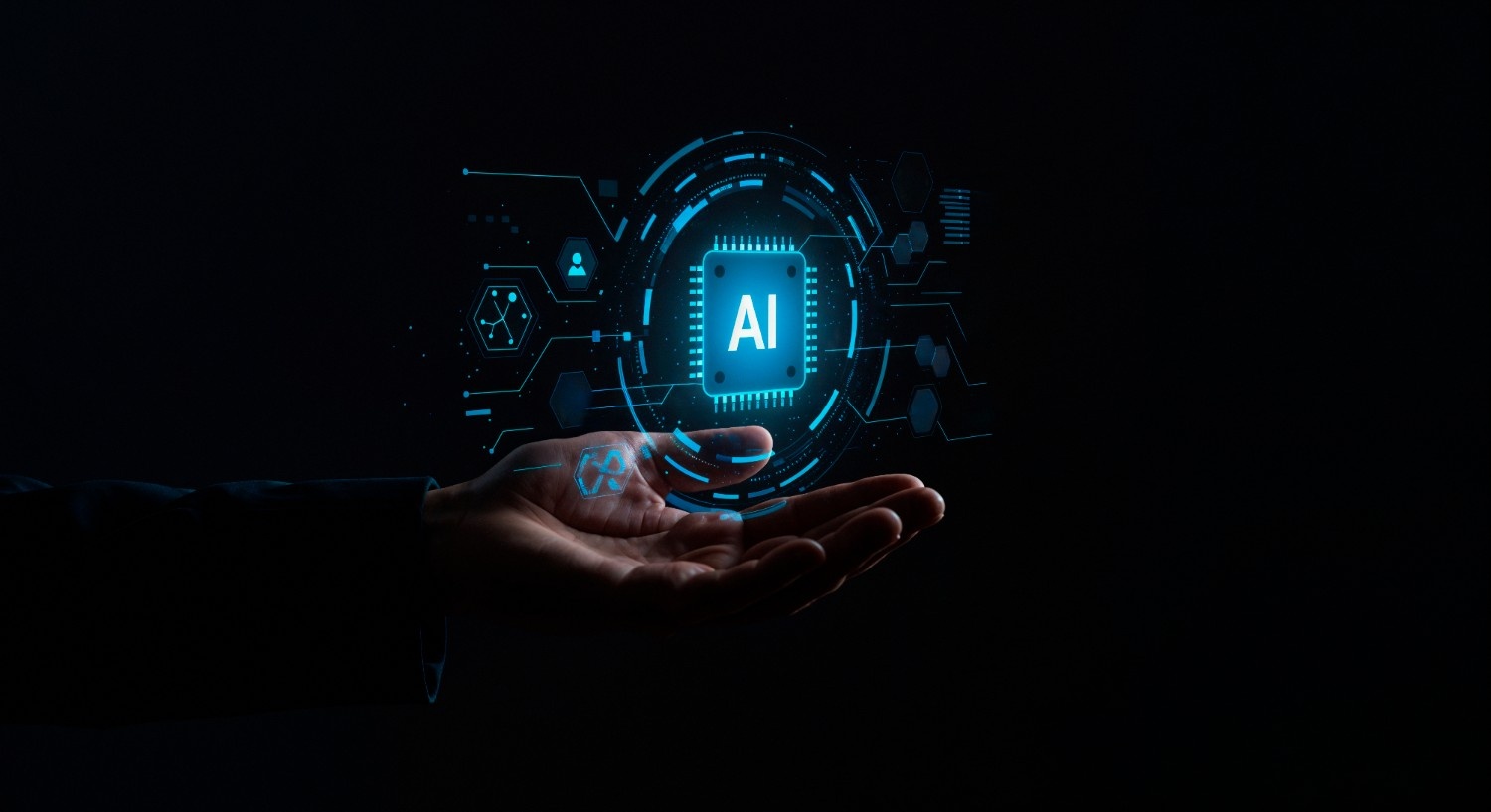Skill-Based Hiring - The New Hiring Trend Shaping the Recruitment Industry
Skill-based hiring is redefining how organizations attract and evaluate talent in 2025. By focusing on real-world capabilities instead of degrees, recruiters can hire faster, reduce bias, and improve retention. Discover how AI-driven hiring software and structured skills assessments are shaping the future of recruitment and workforce planning.

Sanchita Paul
Marketing Communication Specialist

Skill-Based Hiring: The New Hiring Trend Shaping the Recruitment Industry
The hiring industry is currently not only transformed by technology alone, but by necessity. Across industries, talent leaders are facing a critical recruitment challenge - job openings at record highs, yet finding "qualified" candidates feels harder than ever. Degrees and titles no longer guarantee job readiness. What truly matters now is capability, the measurable skills that drive business outcomes.
This is where "Skill-Based Hiring" comes in as a new way to hire people that is based on data and AI. The 2025 Talent Trends Report from SHRM says that companies that hire based on skills first are closing skills gaps faster, making their workforces more diverse, and reducing time-to-hire by over 30%.
Here's how skill-based hiring is redefining recruitment strategy in 2025 and how recruiters can lead the change with strategic actions.
What is Skill-Based Hiring Trend?
Skill-Based Hiring (also called skills-first or competency-based hiring) means looking at a candidate's skills, experience, and potential rather than just their education or job title.
Instead of saying, "Where did you study?" or "What was your last job title?" skill-based recruiters ask, "Can you do this job well, and how do you show that you can?"
The 2025 Talent Trends Report from SHRM says that more and more companies are using skills-based recruiting to fill open positions faster and close talent gaps. Upskilling, reskilling, and AI-assisted hiring have become key parts of this change.
Why Skill-Based Hiring is Dominating Hiring Trends in 2025
1. The Skills Gap is Widening
The gap between academic credentials and job readiness in the real world is growing across all fields. People who learned through bootcamps, online courses, or on-the-job experience are often left out because of traditional degree filters.
Companies like IBM even started "New Collar" programs to hire people based on their skills instead of their degrees. This increased their pool of diverse talent by 25% in three years.
2. AI and Automation are Reshaping Job Roles
The rise of AI is forcing companies to redesign roles and focus on adaptability, critical thinking, and learning agility. Recruiters must now assess not just what candidates know today, but how well they can evolve tomorrow.
3. Hiring for Agility, Not Tenure
According to data from LinkedIn, 72% of CHROs think skill-based hiring improves their companies' readiness for the future. Skilled workers are generally 1.5 times more likely to meet performance goals and exhibit better retention over the long run.
4. Inclusive Hiring and Broader Talent Pools
Access to underrepresented groups and career changers is increased when degree barriers are removed. By assessing measurable competencies rather than pedigree or network advantage, skills-based procedures lessen unconscious bias.
Read More: Inclusive Hiring Practices You Should Implement to Reach Your DEI Goals
The Core Pillars of Skill-Based Hiring
1. Skills Assessments
The core component of skill-based recruitment is skill assessments or practical evaluations designed to measure a candidate's real capabilities.
Leading AI-powered assessment platforms now offer tools such as:
- Cognitive and aptitude tests to evaluate analytical thinking.
- Coding or role simulations for technical positions.
- Situational judgment tests (SJTs) to assess decision-making and integrity.
- Video-based or game-based assessments to capture behavioral nuances and engagement.
Integrating structured skills assessments into the hiring workflow not only improves predictive accuracy but also accelerates time-to-hire and reduces turnover.
2. Soft Skills Matter More Than Ever
As automation handles repetitive tasks, the differentiator is human capability. Among the most in-demand soft skills of 2025 are:
- Communication strategies - The ability to collaborate and influence across digital and hybrid environments.
- Problem solving skills - Analytical and creative thinking to adapt to complex challenges.
- Adaptability and teamwork - Critical in fast-changing business contexts.
These capabilities are best measured through structured interviews, peer assessments, and behavioral simulations, which can be seamlessly conducted within modern hiring software.
3. Continuous Learning and Internal Mobility
Skill-based hiring is not just about bringing in new talent but about recognizing, mapping, and nurturing the skills of your existing workforce. Oganizations that focus on creating a strong internal talent marketplace and align hiring and reskilling strategies, experience:
- Smaller skills gaps across departments
- Higher workforce adaptability
- Stronger internal promotion pipelines
Read More: The Ultimate Guide to Talent Mapping - Strategies Every HR Leader Needs in 2025
Skill-Based Hiring vs. Traditional Hiring: A Comparative View
| Aspect | Traditional Hiring | Skill-Based Hiring |
|---|---|---|
| Focus | Education, years of experience | Technical and soft skills |
| Candidate Pool | Limited to degree holders | Diverse, inclusive, non-traditional talent |
| Assessment | Resume + unstructured interview | Skills assessments + structured interviews |
| Decision Basis | Subjective impressions | Data and evidence |
| Speed & Accuracy | Slower, higher bias risk | Faster, AI-optimized, bias-reduced |
| Outcome | Potential mismatch | Higher job performance & retention |
How to Implement Skill-Based Hiring in Your Organization
1. Redefine Job Descriptions
Replace "degree + experience" requirements with competency-based JDs. Describe quantifiable results and the abilities that lead to them.
For example, write "Ability to analyze business performance metrics and build data-backed recommendations" rather than "MBA required."
2. Integrate Skill Assessments
Use the best hiring software available so that you can integrate or create skills tests for every kind of role. To stay relevant, adjust tests for both technical and behavioral skills.
3. Use AI to Enhance Fairness and Efficiency
Use AI-assisted shortlisting to rank applicants impartially. For example, Talentpool ensures that recruiters focus on the most qualified applicants rather than just the best-formatted resumes by ranking based on skill match. Talentpool's AI scoring helps recruiters give weightage to different parameters to get precise ranking scores for each candidate, along with summaries to understand the results.
4. Standardize Interviewing
For each round of interviews, use structured rubrics. This makes it easier to compare candidates and guarantee consistent evaluation. Include behavioral questions that assess problem-solving abilities and communication tactics in authentic settings.
5. Invest in Skill Analytics and Reporting
Track important recruitment metrics, such as time-to-hire, post-hire performance, and skill match ratios. HR executives can visualize bottlenecks and make data-driven decisions with the help of AI-based dashboards.
6. Create Continuous Learning Loops
Connect learning and development to recruitment insights. When skill gaps are identified, use role-based learning paths to upskill employees rather than rehire externally.
How AI-Powered Hiring Software Like Talentpool Accelerates Skill-Based Recruitment
Skill-based hiring requires seamless coordination between recruiters, hiring managers, and leadership, something traditional ATS software often struggles to provide.
Talentpool was built precisely for this challenge. With AI at every stage of recruitment, our AI recruitment software transforms how HR teams implement skills-first strategies:
- AI JD Generation - Instantly create skill-focused job descriptions.
- AI Shortlisting & Ranking - Match candidates based on real competencies, not keywords.
- Structured Feedback System - Collect hiring manager input directly within the platform.
- Integrated Assessment Platforms: Assign tests directly from within Talentpool and add scores.
- Role-Based Dashboards - Recruiters, managers, and leaders see only what matters to them.
- Analytics & Reporting - Track hiring trends, time-to-hire, and skill match in real time.
Talentpool doesn't just digitize hiring, it intelligently simplifies it. Schedule a demo to know more!
Final Thoughts: The Future is Skills-First
Skill-Based Hiring is not a mere HR trend but the foundation of future-ready organizations. As work becomes increasingly dynamic, success will depend on how quickly companies can identify, hire, and nurture the right skills. Recruiters who welcome this shift will be able to close their talent gaps faster.
Tags

Sanchita Paul
Marketing Communication Specialist
Sanchita Paul is a key member of the Talentpool team, bringing extensive experience in talent acquisition and recruitment technology to help companies build better hiring processes.




